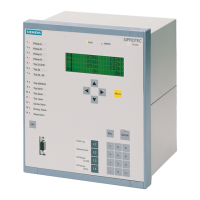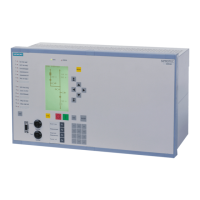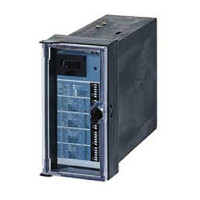Undervoltage Protection
Undervoltage protection detects voltage dips in electrical machines and avoids inadmissible operating states
and possible loss of stability in electrical devices. The stability and permissible torque thresholds of an induc-
tion machine is affected by undervoltage. In network coupling this can be used as a criteria for the network
decoupling.
The undervoltage protection can only be used for three-phase protective objects. This implies that the device
is connected to a voltage transformer. This is therefore only possible for 7UT613 and 7UT633. As the under-
voltage protection only gets its measuring information from the connected voltage measurement, it leaves
the assignment of currents to one side or a measuring location for the function without coating. Setting
causes the same differences as in other protection functions. If the undervoltage protection is assigned to one
side of the main protective object or the three-phase busbar, the voltage limits in related values (U/UN) have
to be set. The values are set to secondary in volts when assigned to a measuring location.
Functional Description
The undervoltage protection in 7UT613 / 7UT633 uses the positive sequence system from the fundamental
harmonic of the connected phase-to-earth voltages. Compared to three single-phase measuring systems, the
detection of the positive phase-sequence system is not influenced by 2-pole faults or earth faults.
Overvoltage protection includes two stages. A pickup is signalled as soon as selectable voltage thresholds are
undershot. A trip signal is transmitted if a voltage pickup exists for a selectable time.
If a fuse failure (failure of the measuring voltage) is detected, or a voltage transformer protection breaker trip
(via a correspondingly marshalled binary input) is indicated (refer also to Section 2.19.1 Measurement Super-
vision), both stages are internally blocked, in order to avoid malfunction of the protection in the event of
secondary voltage failure. Each stage can be blocked individually and/or for both stages can be blocked, via
binary inputs.
Particular attention must be paid to the status of the interrupted system during undervoltage protection. As
protective objects have no primary or measurement voltage, the pickup conditions are therefore always
fulfilled. The same can apply after a tripping of the undervoltage protection or another protection function.
The undervoltage protection should therefore (according to suitable criteria) be completely blocked externally
- e.g. dependent on circuit breaker - via an appropriate binary input.
2.14
2.14.1
Functions
2.14 Undervoltage Protection
SIPROTEC 4, 7UT6x, Manual 233
C53000-G1176-C230-5, Edition 09.2016

